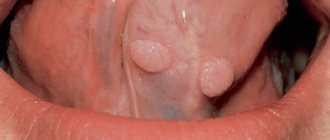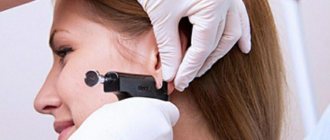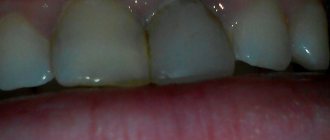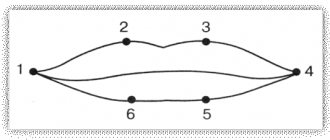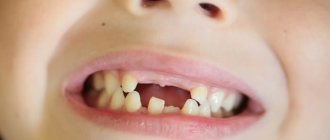One of the external attributes of brave informals now is not only tattoos on the body, a mohawk or an unusual hair color, but also piercings, as a way to express themselves, their dreams and, possibly, fears to the world. The heroes of our report talked about the punctures on their bodies, how their parents reacted to it, and how the guys see themselves in old age. We also learned the opinion of doctors about piercing in general and the consequences of incorrectly made punctures in particular. This material is not for the faint of heart!
Piercing is one of the common forms of body decoration. The word comes from the English “pierce” - to pierce. I think everyone now imagines what a piercing with an earring looks like on a person’s body. This art is quite ancient. The exact place where the tradition originated remains a mystery, but it is known that in ancient centuries, piercings were done by men, thereby showing belonging to the tribe, nobility and even brutality.
For most modern people, piercing does not carry any religious significance, it is just a way of self-expression. The most common places for piercing are ears, nose, eyebrow, lips, tongue, navel, nipples, genitals. Let's find out how, where and why our heroes got piercings.
So people have such stupid questions, like “What, did it go through the bone?”, and I: “Aha, I sawed it through with a drill!”
Diana
Why does it hurt and how painful can it be?
Discomfort during the procedure depends on your pain threshold and the location of the puncture . Some salons offer anesthesia to reduce pain to zero, but we do not recommend doing it unless necessary , because the anesthesia injection is quite painful and is comparable to the puncture itself.
To make the puncture less painful, craftsmen use special laser-sharpened hollow needles. They allow the procedure to be carried out as painlessly as possible.
Professional piercers never use guns for piercing, because they push tissue under high pressure, which results in a lacerated wound. Also, pistols cannot be sterilized in a static machine due to the presence of plastic parts in it.
The main dangers of piercing
If you have a desire to decorate your tongue with an earring, it would be a good idea to first learn more about the possible negative consequences of piercing this part of the body. So, all potential dangers can be divided into three large categories.
Allergic reaction
After tongue piercing, some people develop an allergy to the metal from which the jewelry is made. Without a preliminary examination, it is almost impossible to find out if you are intolerant to some allergens. If the problem is an allergy, then in addition to pain, skin itching, inflammation and even suppuration of the wound may appear.
Bleeding
If the procedure was not carried out very skillfully and carefully, serious bleeding may occur. As mentioned above, many blood vessels are concentrated in this organ, which can easily be caught during a puncture. As a result, severe swelling will occur, which will ultimately lead to breathing problems. Subsequent recovery will take a long time.
Swelling and bleeding may occur after the procedure
Other consequences - infection
The main danger in piercing is the risk of infection. Infection can easily enter the body through tools and an open wound, so today inspection authorities are very strict in monitoring compliance with sanitary standards and rules by employees of salons offering this type of service. It is allowed to use only disposable needles, which should be unpacked in front of the client. Strict measures were introduced because some time ago the mass passion for piercing led to the rapid spread of such serious diseases as HIV infection and hepatitis.
The photo shows a neoplasm that appeared after the piercing.
Anyone who wants to get a tongue piercing should know that a fairly massive piece of jewelry can cause irritation on the gum and injure it. Also, the presence of a foreign metal object in the mouth will negatively affect the condition of tooth enamel and may lead to a change in taste sensations. If your tongue suddenly becomes swollen and numb after the procedure, or an acute piercing pain appears that only intensifies, and the organ itself begins to pulsate, you should urgently seek medical help.
Where is the best place for a beginner to get their first puncture?
Minimal discomfort comes from piercing the eyebrows and lobe , which heal without any problems. It is a little more painful to pierce Helix and Conch, but they look more interesting. If you are very afraid and worried, you can always consult with a master and ask him all your questions. Perhaps the master will suggest you start with the simplest puncture so that you understand the healing process, and then move on to a more complex puncture.
How long does it take for a piercing to heal?
For many who have already decided to decorate their tongue with a spectacular earring, the question remains open of how long it takes for the organ to heal after piercing. As a rule, the whole process lasts from 5 days to 2 weeks - much depends on the characteristics of the body.
Regarding how long the healing process takes, we figured it out. It remains to find out how long the tongue can hurt after a puncture. Unpleasant sensations and discomfort usually persist throughout the healing period. At first, a swollen organ may make it difficult to speak normally. Here it is extremely important to strictly follow all the instructions of the specialist who performed the puncture. Only if these conditions are met will the wound heal successfully within 10-14 days.
Painkillers for piercings
A frequent client request is to take pain relief before piercing in order to completely avoid pain during the piercing, but good salons will refuse you for several reasons:
External anesthesia does not have the desired effect and only affects the skin, without working on the cartilage; it will relieve you of pain only at the beginning of the puncture, so there will still be pain.
If you give a painkiller injection, it will most likely be more painful than the puncture itself (this is especially true for cartilage).
The master may advise you to take a pain reliever for several days after piercing, for example, Nimesil (in powder form), it relieves pain and swelling well after the procedure.
How to make a puncture
To know what to expect, you first need to find out exactly how the piercing procedure is performed. So, this process involves the following steps:
- to begin with, the tongue is placed in a special tool - a clamp, in the center of which there is a hole for decoration,
- after this, the master makes a puncture, for which he uses a special sterile needle intended for one-time use,
- a “barbell” is inserted through a special hole in the needle, after which the needle and clamp are removed,
- after this, the oral cavity is treated with a disinfectant solution, for example, Chlorhexidine.
The photo shows the procedure for piercing the tongue.
If the procedure was carried out during the day, then in the evening the tongue will inevitably swell and cause some inconvenience. The speed of healing largely depends on the individual characteristics of the human body. For some, this process takes five days, for others – two weeks. Keep in mind that during this period you will have to exclude spicy foods and acid-containing foods from your diet, and, if possible, limit the consumption of solid foods. It is also recommended to talk less and move your tongue so as not to accidentally touch the wound.
#7 ways to pierce your nose
Initially, I wanted to clarify the name of the procedure during which the nose is pierced. Its name, which many people know, is piercing. Common nose piercing options include:
- bridge, when the tissue of the nose bridge is pierced;
- puncture of the lateral part of the nostril (side), which is carried out both in one and in 2 wings at once;
- nasallang - a way to pierce the nose in the septum and wings;
- "Austin Bar" is a horizontal piercing of the tip of the nose;
- piercing of the nasal tip is done from the nostril upward without injuring the nasal septum;
- the septum is performed by piercing the septum without involving the wings in the process;
- The septril looks like a puncture on the lower wall of the tip of the nose with the decoration coming out of the septum and pointing downwards.
These options are the safest for the skin. It is permissible to do one or several punctures at once, it all depends on the patient’s wishes.
Choose a good specialist, as it is easy to get an infection during such a procedure. Dermatologist Margaret Weiss
What to choose?
With the same level of pain, the use of a needle is superior to a gun in terms of sterility and accuracy. It must be taken into account that the consequences of the procedures are different. After the needle, the wound heals quickly, the risk of damage to bioactive points is minimal, provided that the work is done by a professional. When pierced with a gun, they are not so precise; bleeding may occur, for example, when piercing the tongue.
The gun is designed to provide services in jewelry stores. In a salon, the level of service should exceed that of a store, so the use of a pistol should raise red flags.
Art of Pain studio masters perform piercings with a diamond-ground needle. The tool quickly cuts through tissue and forms a smooth channel without lacerations or tears. Such punctures heal quickly, without inflammation.
To get a safe piercing, we invite you to our studio in St. Petersburg. We guarantee a professional approach and sterility.
What is it prescribed for?
- It is carried out to collect material for analysis in case of chronic otitis media. Microflora samples are tested for drug resistance in order to select a treatment regimen.
- For administration of contrast agent before radiography.
- To check the drainage capacity (patency) of the Eustachian tubes. Contrast is injected and released through the nose.
- For therapeutic purposes. After the puncture, a medicinal substance is injected into the cavity. This provides the best effect in the treatment of purulent otitis media.
Tympanocentesis is indicated for acute otitis media. The disease is accompanied by severe pain, high fever, and external changes in the eardrum. In such cases, the risk of intoxication and complications is high. To stop the disease, it is necessary to inject medicine (antibiotics) directly into the tympanic cavity.
How to pierce your nose at home?
For those who are not afraid of possible negative consequences from a self-made piercing, advice on how to carry out the procedure will help. For this you will need the following supplies purchased at the pharmacy:
- aseptic or alcohol-containing liquid;
- sterilized latex gloves;
- cotton pads;
- retainer;
- disposable needle with catheter.
Going through the stages will help you pierce your nose at home.
- The upcoming piercing is marked with a dot placed with a ballpoint pen/marker.
- Disinfect clean hands with an aseptic/alcohol-containing liquid and put on gloves.
- Disinfect the skin in the area of the upcoming piercing.
- In case of piercing on the side of the nose using the septum or bridge method, a retainer is placed outside and inside the nose.
- The needle is quickly inserted through the hole in the latch with a precise movement. We can pierce the nostril from the left side to the right or vice versa, but always from top to bottom.
- Without removing the needle from the hole, insert the edge of the earring clasp into the catheter, then slowly and carefully insert the jewelry into the punctured point and snap it into place.
- Re-treat the area with an aseptic/alcohol-containing solution.
Only if you follow the instructions will you be able to pierce your nose without any trouble. But the vast majority of doctors advise against performing the procedure yourself and entrust it to a specialist.
Ian, 16 years old, 6 punctures
VOX : What does each puncture mean to you?
— A way of self-expression. There is no specific meaning, as it may have been for the Egyptians or Indians.
VOX : How did your parents react to this?
— I’m still in shock. They think it's abnormal, my friends think the same, but I am who I am and they have to come to terms with how I like to look.
VOX : Have you ever regretted getting a piercing?
- No never.
VOX : Will there still be punctures?
- Yes, I want to pierce my cheeks and nose.
VOX : What is your hobby?
— I listen to music, am interested in portrait photography, and love motorcycles.
VOX : Which puncture was the most painful?
— Hmm... Most likely, this is the upper “symmetry” ( author’s note)
– two punctures in the upper lip, located horizontally).
VOX : What inspired you to get the piercing?
— When I was 10-11 years old, my sister “pierced” her lower lip. Well, at a time when everyone scolded her for her appearance and said: “Well, what have you done to yourself?”, I saw some beauty in it. This inspired me to do something similar on myself.
VOX : How would you feel if future children want to get piercings?
“Calm down, I’ll even take them to the salon myself,” Ian smiles.
Firstly, purely out of curiosity - whether I could stand it, and, secondly, I wanted to try these unusual sensations.
Yaroslav
Blue hair and a nose ring: why teenagers experiment with their appearance
What's the first thing that comes to your mind when asked about teenagers? Of course, their “ruffiness” and audacity, which go hand in hand with their exotic appearance. I remember my best friend at school had bright orange bangs. Another classmate roamed the expanses of the blue-green school corridors with a bright pink bob. A classmate was running around in torn jeans, which almost all the teachers were trying to sew up. Well, I went with an extreme boy haircut - but with a completely restrained red color.
Piercings, tattoos, bright clothes, extreme hair colors - why is it all ? First of all , to stand out, show your individuality, be different from everyone else among other teenagers, and certainly seem creative and advanced against the backdrop of boring adults. And secondly, thirdly and fourthly...
Teenagers are far from infantile creatures - they are rather small adults and certainly understand more than their parents think
They see perfectly what the adult world is like: anxious, panicky, twitchy, hyper-responsible and super-busy. To bring optimism to this vision of the world, to protect themselves from a future in a strict gray suit and tie, young people dye their hair and mercilessly prick their navels, ears, noses, eyebrows and lips with needles.
The world in which little adults live is very often categorical
For some reason, society believes that the one who distinguishes black from white, clean from dirty, salty from sweet, and so on will be successful. In this world of rules there are no halftones, but life is much more voluminous and diverse than such boring attitudes. With their extraordinary appearance, teenagers are trying to show that in their world there is a place for other colors, that there are many shades - and all of them are beautiful. From here, according to cultural expert Olga Vainstein, problems with adults arise: parents, teachers, grandparents have already accepted the rules of the game, which is why they are so annoyed by teenagers who insist on their own, who do their best to deny these norms.
Exotic appearance is a kind of mask that helps teenagers cope with difficulties and adapt to the changes that occur in their thoughts and bodies.
Psychotherapist Patrice Ewer gave an interesting example about teenagers' clothing. As a rule, boys and girls who wear clothes that are too baggy do not want to focus on their gender differences, because body transformations occur at an alarming rate. You need to get used to all this, get used to it. And wearing genderless, universal clothing seems to create a calming cocoon in which there are no gender problems of the adult world (from the category of “a boy should be pumped up and strong”, and “a girl should have a thin waist”). But all teenagers are different. By the way, people live perfectly well without muscles and a waist - however, in adolescence, few people think about this.
Another great example is dreadlocks on girls. Psychoanalysts see in them a reluctance or unpreparedness for relationships with the opposite sex: dreadlocks resemble snakes on the head of the Gorgon Medusa. She herself is attractive, but snakes instead of hair repel men. “Dreaded” girls prefer to be friends with the opposite sex without any romantic flair. Olga Weinstein sees dreadlocks as a symbol of protest, since most people find this hairstyle dirty and ugly.
In the tattoos, the famous culturologist sees a clear message: “I hurt myself - look at my scars, it means I have reached a new level of development.” By the way, other experts interpret tattoos as a desire to prove to others and to yourself that you are a strong person.
In addition, exotic appearance is also a way to shape your personality
According to psychologists, a teenager needs to remain opaque, unreadable to parents and society for some time - he uses this pause to understand who he is, where he wants to go, what his purpose is. From this point of view, a red bang or a shaved temple is an excellent opportunity to temporarily put adults into a stupor, confuse them, and disorient them.
What should I do?
Adults have opposite reactions: some get angry and force them to wash off their emo makeup under running ice water, while others get inspired and go get an ultra-short haircut and dye their hair some creative color like strawberry pink. By the way, there are much more of the former (although perhaps not in such terrible manifestations).
Everything has its time. And adolescence is precisely the time to look for yourself, to try yourself in different guises. My adolescence was very calm - without a pierced lip, blue hair and ripped jeans. But all this (the desire to find myself, to stand out, to “move away”) came a little later: I was probably a strange 30-year-old aunt who came to the salon for a navel piercing (Eh! I wish I had gotten my eyebrow pierced!). Therefore, you need to treat such “swings” with understanding - as a stage in the life of your child.
Experts recommend that parents understand and forgive. And also to figure out what is going on in the young soul, that it is looking for unusual manifestations, to become more restrained, more tactful, more attentive. And, of course, love. This is probably the most important thing.
Reviews
NATALIA, 34 YEARS OLD:
“My daughter wanted to pierce her nose, and I “gave” her a piercing for excellent studies before the summer holidays. Therefore, I know the entire course of the procedure. We bought a larger earring made of surgical steel in a certified salon; it holds well after the puncture on initially slightly swollen tissue. And a small piercing earring can pop out. Before the procedure, the earring was kept in alcohol for a day and brought to the doctor in a bottle. No incidents happened, my daughter now walks around happy.”
OKSANA, 20 YEARS OLD:
“My friend and I have had nose piercings for years. Among the nuances of the procedure, I know from experience that inserting an earring into a puncture closer to a thicker place is very painful. This was done in the salon at my request. The pain was difficult to bear, but as soon as the earring was inserted, the pain immediately went away. I bought it from copper steel in the salon so that it would heal faster, wiped it with Septidine antiseptic, and removed the putrefaction with iodine. It heals completely after about 3 months. I do not recommend injecting yourself or with the help of friends, there is a high probability that infection will occur. This means that you will have to remove the earring and wait for healing.”
ELLA, 28 YEARS OLD:
“I did it 3 times, and sometimes I lost the carnations. Surprisingly, the hole healed quickly and did not leave a scar. For the first time I pierced my nose without preparation by soaking a purchased earring. I was walking around the shopping center with my little daughter, noticed an advertisement, entered, picked up an earring made of special material (later exchanged it for another one). The professionals disinfected it in my presence, inserted it into the gun, and made a dot on the wing of the nose with a marker. A moment - and it was done, there was no fear. I slept the night wearing an earring from a salon, and a day later I changed it to a silver stud with small stones. In the morning and evening for the 2nd day I applied peroxide and ointment to my nose. So there is no need to be afraid."
When should you go to the doctor (5 reasons)?
What signs should alert you in the postoperative period? You should think about going to the doctor if the following troubles occur:
- An increase and darkening of redness in the puncture area after 2-3 days, which is possible if the puncture gets infected.
- The formation of a painful lump if staphylococcus bacteria penetrate the wound. This threatens the accumulation of fluid and pus inside.
- Discharge from the hole of white, yellow, green secretions - this indicates an infection in the puncture. The feeling of an unpleasant odor is a sign of infection of the wound.
- Pain that persists or gets worse several days after the procedure is often caused by an infection in the puncture area. The pulsation in it is caused by serious inflammation and suppuration.
- Fever/chills are a reason to immediately consult a doctor. Most likely, such complications are caused by severe infection in the puncture.
Manifestations that alarm your attention cannot be ignored. Especially if at least 1 additional alarming symptom is added to the main ones.
How to reduce pain after the procedure?
When the jewelry has already been inserted, it is advisable to leave it alone for a while: do not touch it with your hands (especially with unwashed hands), carefully remove high-necked clothes, do not apply makeup, and do not get the jewelry wet. If you follow the recommendations for caring for the puncture for a month, it will heal during this time and the pain will go away. However, neglecting the rules of hygiene can lead to an infection getting into the wound, causing local inflammation with the release of pus. After this, a scar may remain, which will become re-infected with minor injuries and decreased immunity due to colds.
Pros and cons of the pistol
How is the procedure done?
- They make markings.
- The puncture site is treated with a disinfectant composition.
- Insert the decoration into the gun.
- They shoot, making a puncture while installing the earring.
- Sterilize the puncture again.
Craftsmen at inexpensive salons often use a pistol. This procedure takes a minimum of time. A person only hears a quick bang and does not have time to feel the pain.
This method is used to pierce the ear lobe and cartilage, the wings of the nose, and rarely the navel.
When choosing what to use for piercing, consider the disadvantages of using a gun. The device tears the skin. Since the puncture is carried out directly by the earring, the skin is severely injured. The tip of the earring stem is blunt, leaving a small laceration. As a result, the puncture looks sloppy; cracks may spread into which dirt gets trapped.
There is a danger that if the jewelry is tightly clamped with a fastener, air will not flow to the puncture area and oxidation will occur. With this development of events, inflammation of the wound cannot be avoided.
Another disadvantage of using a gun is the difficulty in fully sterilizing the device, since it cannot be disassembled. Poor handling makes the procedure unsafe. Microscopic blood from a previous client may remain in the device.
How to pierce the eardrum
The puncture is done under local anesthesia. The anesthetic is poured into the ear canal or a solution of novocaine is injected through the postero-superior wall of the external auditory canal. According to indications, tympanopuncture is performed under general anesthesia, in particular in children, when it is impossible to ensure complete immobility of the patient.
The patient lies on his back, head turned to one side, sore ear on top. The procedure itself contains three stages:
- The outer ear is treated with alcohol using a cotton swab. If necessary, remove pus, excess sulfur, and dead epithelium. A small amount of the solution is instilled directly into the ear canal to disinfect the membrane.
- The otolaryngologist installs an ear funnel and, through it, with a syringe and a needle, punctures the tympanic membrane in the area of maximum protrusion, or in the posterior quadrant. The needle enters a maximum of 1.5–2 millimeters.
- The contents of the tympanic cavity are collected or a medication is administered. The drug should be at body temperature (36–37 degrees). If administered correctly, part of the solution will exit through the nasal cavity.
If the technique is violated, if the needle is inserted too deeply, secondary injury to the membrane and partial hearing loss are possible. If the solution for administration was too cold, side effects such as nausea and vomiting are observed. If the medicine is taken quickly, dizziness may occur. When the procedure is carried out correctly, relief comes quickly. If there are no complications, the patient goes home after the operation.
In a medical setting, tympanocentesis is performed both to obtain material for analysis and to administer a drug. The puncture is carried out under sterile conditions. An experienced specialist will do everything as quickly and comfortably as possible. The ENT department employs doctors with 10 years of experience. Consultations are held seven days a week.


